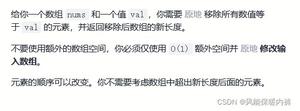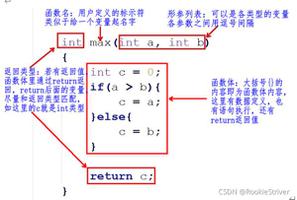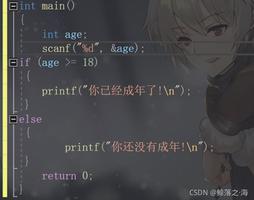C语言菜鸟基础教程之条件判断
(一)if...else
先动手编写一个程序
#include <stdio.h>
int main()
{
int x = -1;
if(x > 0)
{
printf("x is a positive number!\n");
}
else
{
printf("x is not a positive number!\n");
}
return 0;
}
运行结果:
x is not a positive number!
程序分析:
定义一个整数x,并给他赋值。这个值要么大于0,要么不大于0(等于或小于0)。
若是大于0,则打印x is a positive number!
若不大于0,则打印x is not a positive number!
这里建议不要再使用在线编译器,而是使用本机编译器(苹果电脑推荐Xcode,PC推荐dev C++)。在本机编译器上设置断点逐步执行,会发现if中的printf语句和else中的printf语句只会执行一个。这是因为if和else是互斥的关系,不可能都执行。
(二)if...else if...else
稍微改动程序
#include <stdio.h>
int main()
{
int x = 0;
if(x > 0)
{
printf("x is a positive number!\n");
}
else if(x == 0)
{
printf("x is zero!\n");
}
else
{
printf("x is a negative number!\n");
}
return 0;
}
运行结果:
x is zero!
程序分析:
假如条件不止两种情况,则可用if...else if...else...的句式。
这个程序里的条件分成三种: 大于0、等于0或小于0。
大于0则打印x is a positive number!
等于0则打印x is zero!
小于0则打印x is a negative number!
注意,x == 0,这里的等号是两个,而不是一个。
C语言中,一个等号表示赋值,比如b = 100;
两个等号表示判断等号的左右侧是否相等。
(三)多个else if的使用
#include <stdio.h>
int main()
{
int x = 25;
if(x < 0)
{
printf("x is less than 0\n");
}
if(x >= 0 && x <= 10)
{
printf("x belongs to 0~10\n");
}
else if(x >= 11 && x <= 20)
{
printf("x belongs to 11~20\n");
}
else if(x >= 21 && x <= 30)
{
printf("x belongs to 21~30\n");
}
else if(x >= 31 && x <= 40)
{
printf("x belongs to 31~40\n");
}
else
{
printf("x is greater than 40\n");
}
return 0;
}
运行结果:
x belongs to 21~30
程序分析:
(1)
这里把x的值分为好几个区间:(负无穷大, 0), [0, 10], [11, 20], [21, 30], [31, 40], (40, 正无穷大)
(负无穷大, 0)用if来判断
[0, 10], [11, 20], [21, 30], [31, 40]用else if来判断
(40, 正无穷大)用else来判断
(2)
符号“&&”代表“并且”,表示“&&”左右两侧的条件都成立时,判断条件才成立。
以上是 C语言菜鸟基础教程之条件判断 的全部内容, 来源链接: utcz.com/z/319505.html







